Let's talk Yorkshire Terriers
Petite but plucky, what they lack in size these diminutive dogs more than make up for in character. Known for their feisty yet friendly temperament, Yorkshire Terriers have bags of personality, make great company and form close attachments to their human families. With all the traits of a true terrier, they make good little watchdogs too. Given all this, and their glorious mane of long silky hair, they are often rightfully described as a ‘miniature lion’.
Official name: Yorkshire Terrier
Other names: Yorkie
Origins: United Kingdom
Drooling tendencies
1 out of 5Grooming needs
4 out of 5Shedding Level
1 out of 5Barking tendencies
3 out of 5Energy level*
1 out of 5Compatibility with other pets
3 out of 5Warm weather?
2 out of 5Cold weather?
1 out of 5Suited to apartment living
5 out of 5Can stay alone
2 out of 5Family pet?*
3 out of 5
| Male | Female |
|---|---|
| Height | Height |
| 18 - 21 cm | 18 - 21 cm |
| Weight | Weight |
| 1.8 - 3.2 kg | 1.8 - 3.2 kg |
| Life stages | |
|---|---|
| Puppy | Adult |
| 2 to 10 months | 10 months to 8 years |
| Mature | Senior |
| 8 to 12 years | 12 to 22 years |
| Baby | |
| Birth to 2 months | |
Drooling tendencies
1 out of 5Grooming needs
4 out of 5Shedding Level
1 out of 5Barking tendencies
3 out of 5Energy level*
1 out of 5Compatibility with other pets
3 out of 5Warm weather?
2 out of 5Cold weather?
1 out of 5Suited to apartment living
5 out of 5Can stay alone
2 out of 5Family pet?*
3 out of 5
| Male | Female |
|---|---|
| Height | Height |
| 18 - 21 cm | 18 - 21 cm |
| Weight | Weight |
| 1.8 - 3.2 kg | 1.8 - 3.2 kg |
| Life stages | |
|---|---|
| Puppy | Adult |
| 2 to 10 months | 10 months to 8 years |
| Mature | Senior |
| 8 to 12 years | 12 to 22 years |
| Baby | |
| Birth to 2 months | |
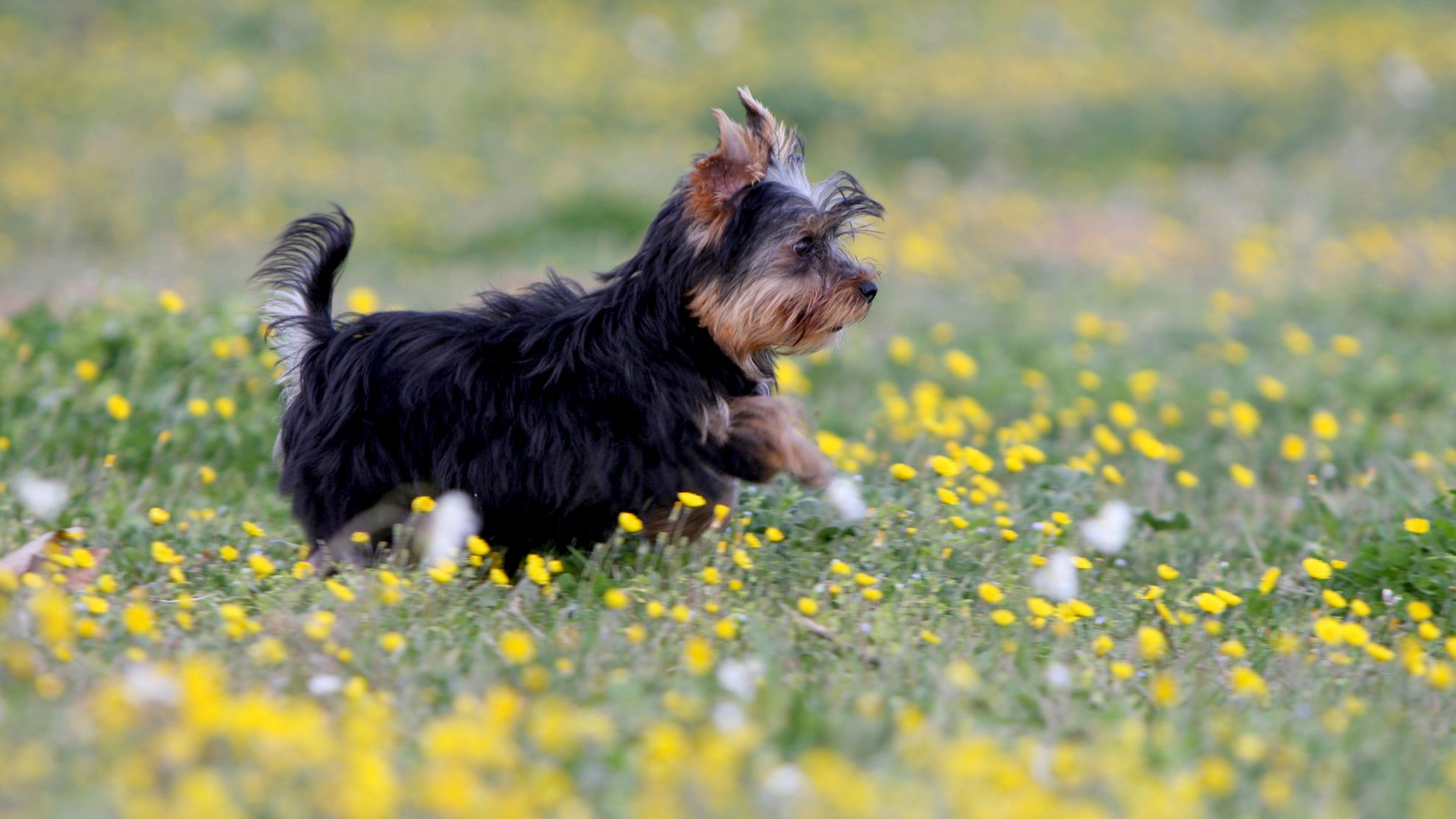
Get to know the Yorkshire Terriers
All you need to know about the breed
Bred in the north of England during the Industrial Revolution, the job of the Yorkshire Terrier was originally to keep the mines and textile mills free of vermin. It wasn’t until late Victorian times that they became popular as a lapdog – and began, quite literally, living in the lap of luxury among the English upper classes.
Certainly, with their regal-like bearing, it’s as if the Yorkshire Terrier was always destined for greater things. But, in reality, they are a friendly, playful breed with an inquisitive nature that makes them lots of fun.
Among other Yorkshire Terrier characteristics, they are fond of attention and like to stay close to their owners. They can be quite protective of them if the need arises and, in some cases, have the potential to be a bit yappy. For this reason, as well as their small size, they are better suited to families with older children².
Famed, of course, for their show-stopping silky coats, this is often topped off with a hair accessory to keep their locks out of eyes. Interestingly, the Yorkshire Terrier’s long, slinky coat is exceptionally fine and more like human or horse hair. It does require a bit of care to keep it as its glossy best, but, the Yorkie is a breed that doesn’t really shed, so no vacuuming the sofa required.
As one of the smallest breeds of dog, the Yorkshire Terrier’s compact size means they’ll also fit in well to most home set-ups. Great companions for those living alone, the Yorkie is one of the longer-living breeds, too, and can easily reach their late teens. No wonder then that the Yorkshire Terrier is one of the most popular toy dog breeds world-wide¹.
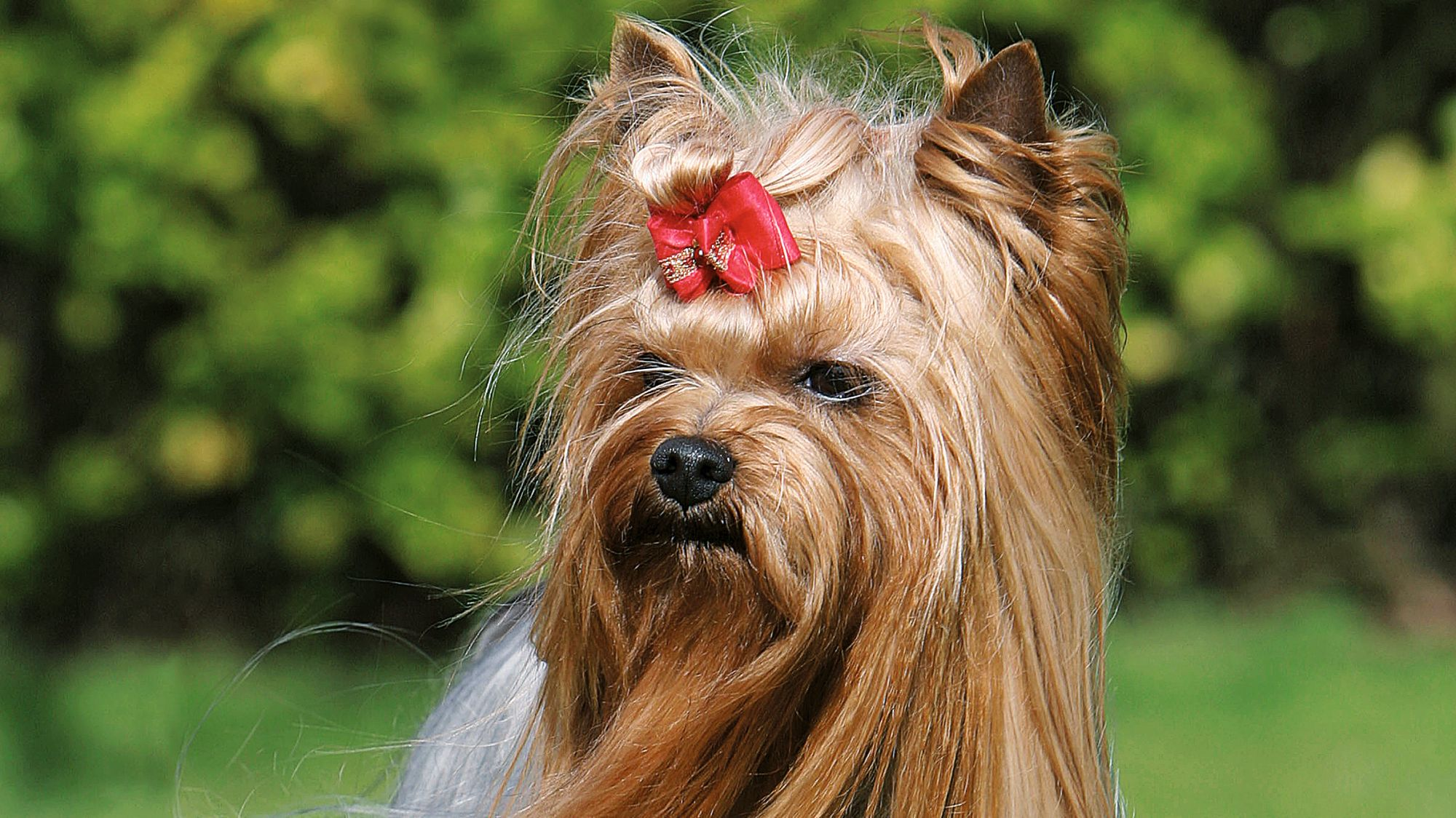
Facts about Yorkshire Terriers
1. A tale of two terriers
In L. Frank Baum’s illustrated book, The Wonderful Wizard of Oz, the little dog Toto appears to have been a Yorkshire Terrier. However, when the story was made into a film, the starring role was stolen by a Cairn Terrier. The Yorkies got their revenge, though, with an appearance in the Audrey Hepburn movie, Funny Face, which featured her own dog.
2. Bending your ear...
Did you know that the puppies are born with floppy ears? In some cases, they remain that way for life. This is only an issue if you intend to show your Yorkie, as judges tend to look for upright ears in the breed, but it is in no way a problem for the dog. Also, many people find it a rather endearing quality.

Enter our Spring Giveaway
History of the breed
During the 1800s, it was common for miners and mill workers to travel to the region seeking a job, among them were a number of Scots. These would-be workers from the north brought with them their own breeds of terrier. In time, these Scottish dogs bred with the English varieties which resulted in the Yorkshire Terrier breed that we know and love today.
Although we can’t be certain of their precise ancestry, it is thought the Yorkshire Terrier emerged from the crossing of at least three breeds of terrier – the old Black and Tab, the Maltese and the Skye. In any event, these tough little terriers went on to gain a reputation as an excellent hunting dog and were used to catch small vermin in the mines and mill buildings. The breed was officially recognised by the Kennel Club of England in 1886.
During the late Victorian era, the Yorkshire Terrier went on to become a popular companion animal – a lapdog favored by the English upper classes. However, the breed’s popularity soon expanded far beyond Yorkshire to the US. The Yorkie has been a firm favorite all over the world ever since.
From head to tail
Physical characteristics of Yorkshire Terrier
1.Head
2.Face
3.Body
4.Fur
5.Tail
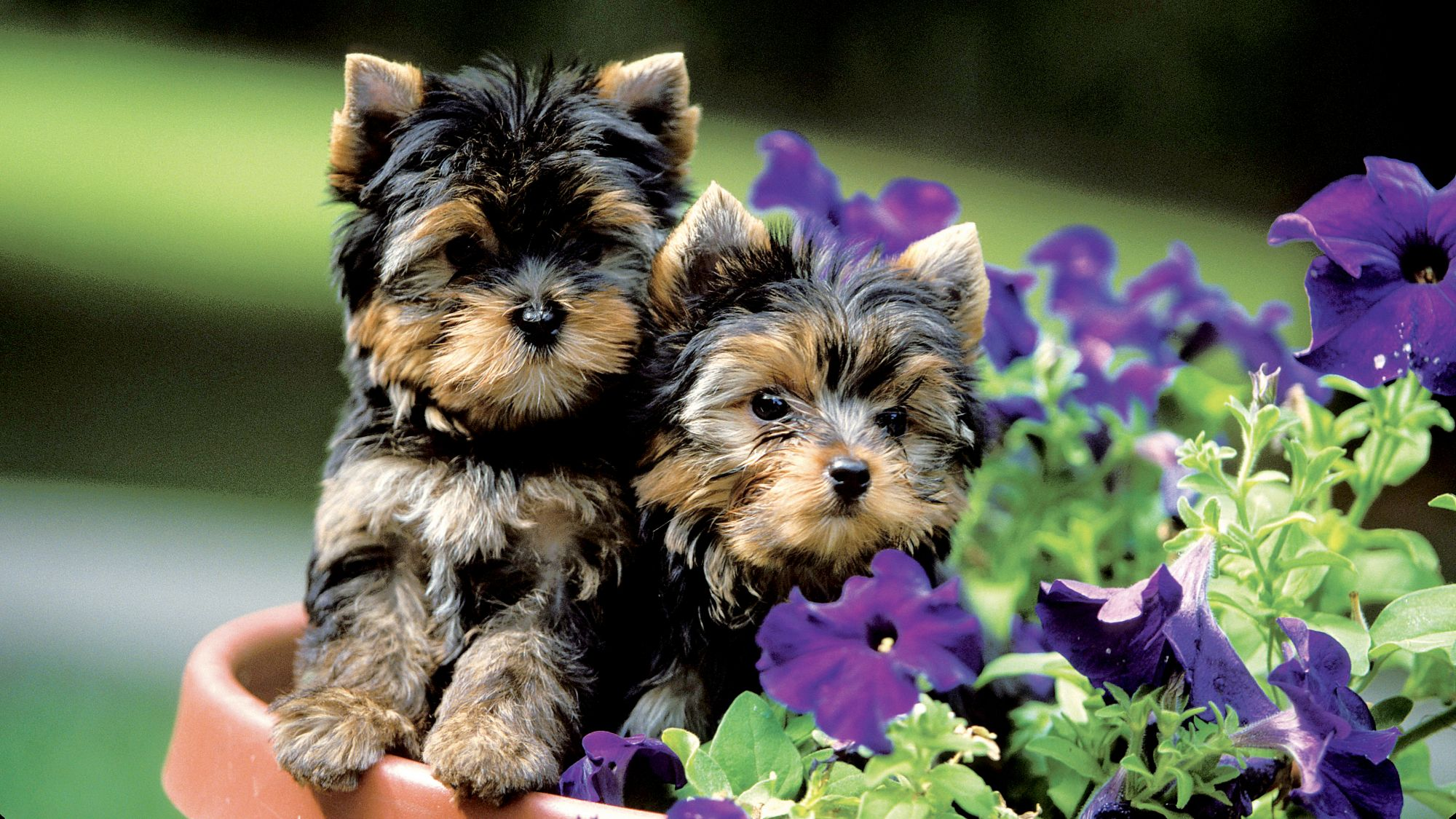
Things to look out for
From specific breed traits to a general health overview, here are some interesting facts about your Yorkshire Terrier
The little legs of the Yorkie need extra-special care
One of the most common complaints in the Yorkshire Terrier is a dislocated kneecap (luxating patella). Once known as ‘trick knee’ in humans, it occurs when the kneecap literally pops out of place. Symptoms can include obvious discomfort, limping or an odd ‘skipping’ walk – and it can also lead to arthritis later in life. As always, prevention is better than cure, so it’s best to keep your Yorkie away from anywhere they might try and jump. If, however, the condition does occur, there is plenty that can be done, ranging from muscle-building exercises and weight management to anti-inflammatory medications. Speak to a veterinarian for advice and treatment options.
It’s better to use a harness rather than a leash
Like many small breeds of dog, Yorkshire Terriers can be prone to a condition known as tracheal collapse, which is a narrowing or collapsing of the windpipe. This can cause an obstruction of the airways resulting in symptoms ranging from a honking cough to noisy breathing and gagging sounds. In severe cases, it can also cause fainting. Caused by a genetic weakness, the condition is often triggered if a Yorkshire Terrier lunges forward when wearing a collar and leash, or if the owner pulls back too hard. Therefore, it is highly recommended to opt for a harness, which also helps with better control when walking.
It’s important to look after their teeth and gums
Another thing to watch out for with Yorkshire Terriers is dental health. Because of their smaller, more crowded mouths, they can be more prone to problems such as gingivitis (an inflammation of the gums) or periodontal disease (where the tooth’s entire support structure is affected).
In more serious cases, the resulting bacteria can spread around the body and damage the liver and kidneys, so it’s important to stay on top of this. The good news, though, is that daily brushing will help keep problems at bay. With teeth kept clean and healthy, the chance of infected gums is reduced in the first place. A good diet is vital, too, as are regular check-ups with your veterinary team.
Tailored nutrition for Yorkshire Terriers
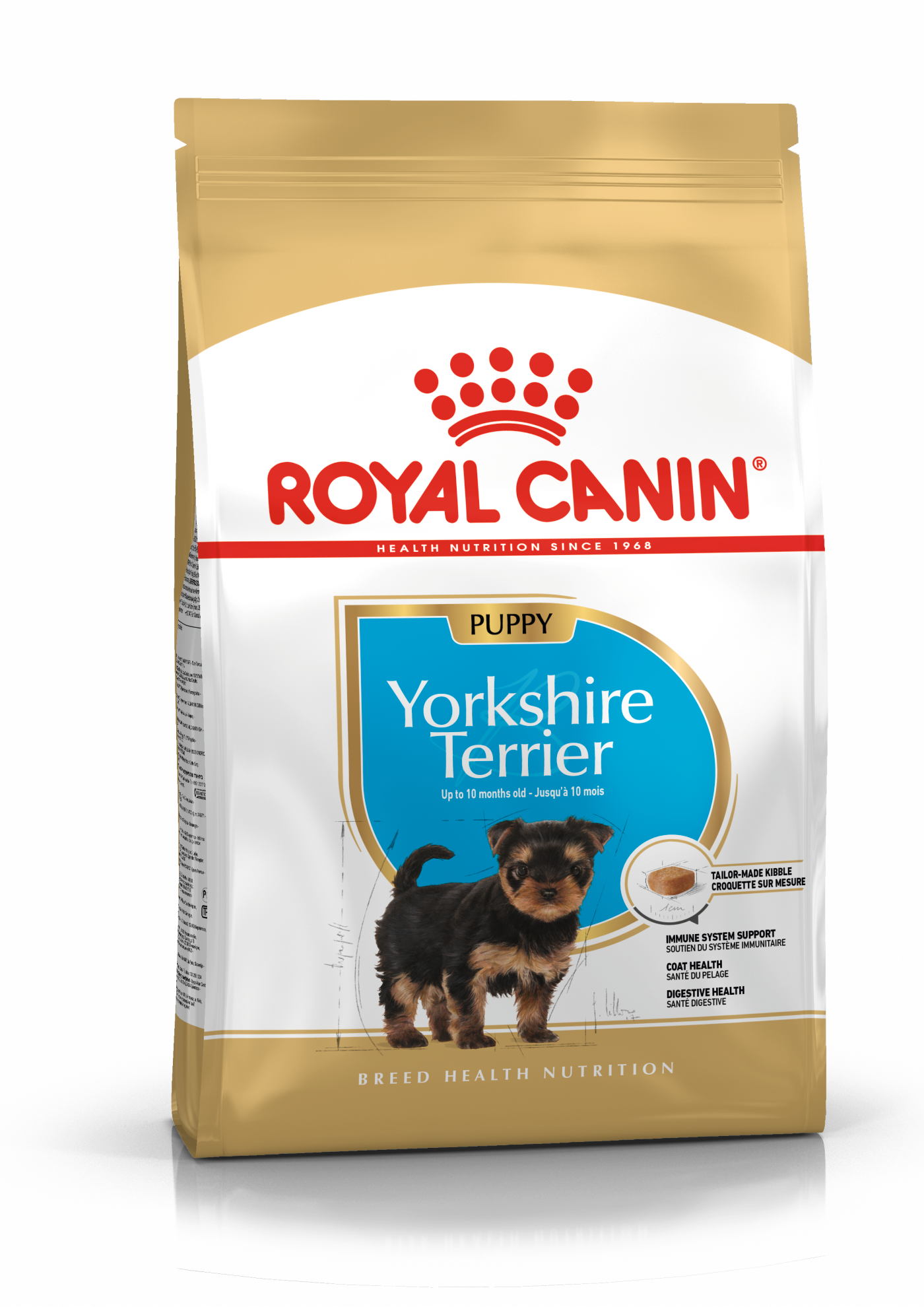
When choosing food for a Yorkshire Terrier, there are many factors to consider: their age, lifestyle, activity level, physiological condition, and health, including potential sickness or sensitivities. Food provides energy to cover a dog’s vital functions, and a complete nutritional formula should contain an adjusted balance of nutrients to avoid any deficiency or excess in their diet, both of which could have adverse effects on the dog. The following recommendations are for healthy animals. If your dog has health problems, please consult your veterinarian who may recommend an exclusive veterinary diet. Clean and fresh water should be available at all times to support your Yorkshire Terrier’s urinary health. In hot weather and especially when out exercising, bring water along for your dog’s frequent water breaks.
Coat Health
Enriched with omega-3 fatty acids (EPA and DHA), omega-6 fatty acids and biotin to support the health of the Yorkshire Terrier's beautiful long coat.
Immune System Support
As puppies grow, they will experience big changes and new discoveries. During this key period, the puppy's immune system develops gradually. This formula helps support your puppy's natural defenses with an exclusive complex of antioxidants including vitamin E.
Digestive Health
Formulated with high-quality protein and prebiotics to support digestive health and a balanced intestinal flora, contributing to optimal stool quality.
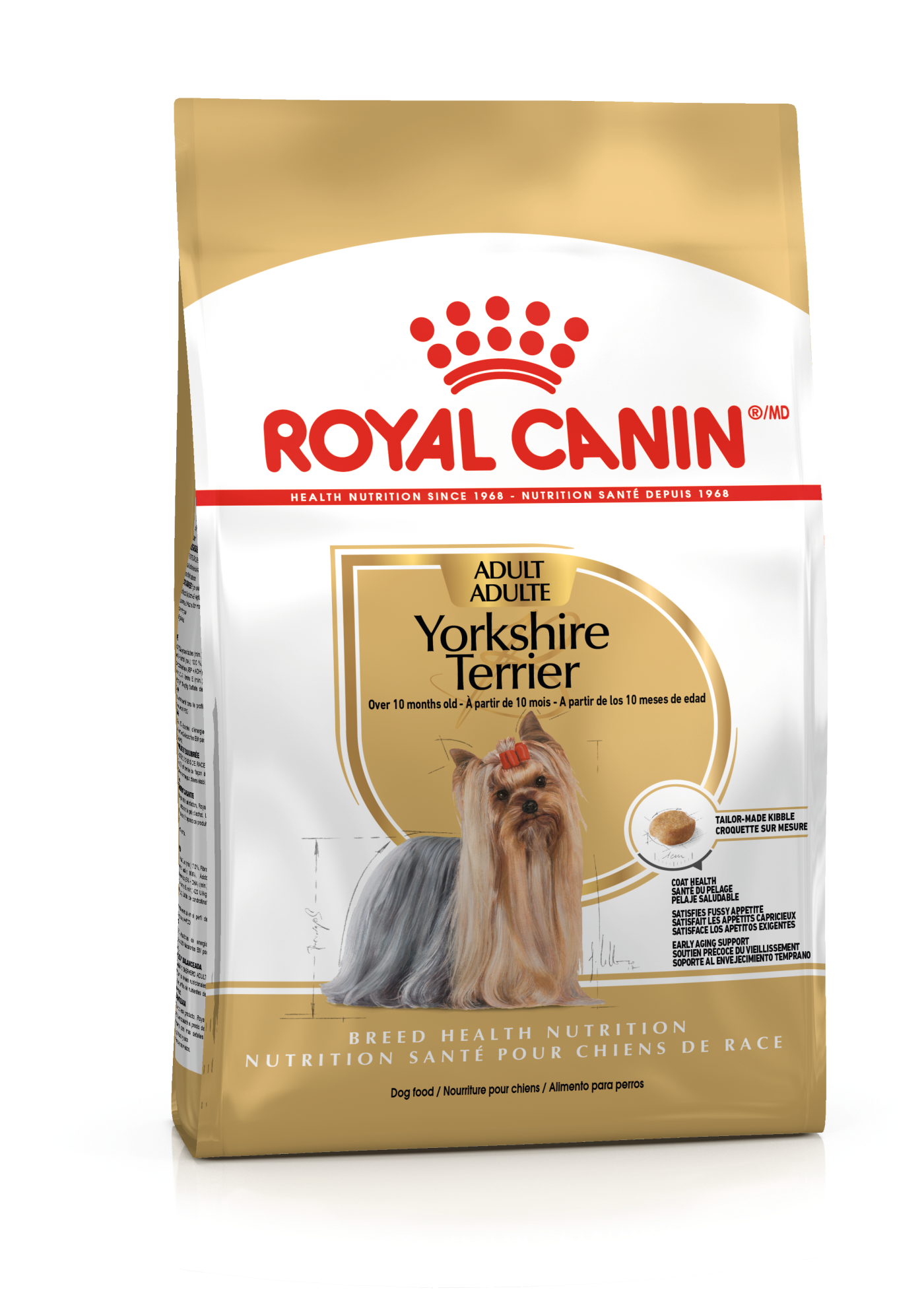
The main nutritional goals for adult Yorkshire Terriers are:
Coat Health
The Yorkshire Terrier's hair is known for its continuous growth and natural softness. This exclusive formula helps maintain the health of the Yorkshire Terrier's long coat. Enriched with omega-3 fatty acids (EPA and DHA), omega-6 fatty acids and biotin.
Satisfying Fussy Appetite
With an extremely fussy appetite, Yorkshire Terriers benefit from a very palatable food. This formula helps satisfy the fussiest of appetites with a combination of exceptional aromas and flavors.
Early Aging Support
The Yorkshire Terrier is known to have a long life expectancy. This formula supplies a selection of targeted nutrients including vitamin C, EPA and DHA to help maintain vitality as the Yorkshire Terrier faces first signs of aging.
Dental Health
The kibble's shape, size, texture and formula are adapted to the Yorkshire Terrier. This formula helps reduce tartar formation by encouraging the dog to chew.

After 8 years old, Yorkshire Terriers start facing the first signs of aging. A diet enriched with antioxidants helps maintain vitality, and key nutrients, such as taurine, help support good cardiac function. Aging is also accompanied by the modification of digestive capacities and particular nutritional requirements, so food for aging Yorkshire Terriers should have the following characteristics:
Healthy Aging Complex
Developed to support healthy aging, this formula contains an exclusive combination of antioxidants to help maintain cellular health and is formulated with an appropriate phosphorus content to help care for the kidney health of Yorkshire Terriers as they mature.
Healthy Skin & Coat
Helps maintain the health of the Yorkshire Terrier's famous long coat. Enriched with precise levels of omega-3 fatty acids, omega-6 fatty acids and biotin.
Digestive Health
A precisely balanced nutritional formula that helps support optimal digestive health. It contains highly digestible proteins, a blend of prebiotics and fibers to promote a balanced intestinal flora and help promote stool quality.
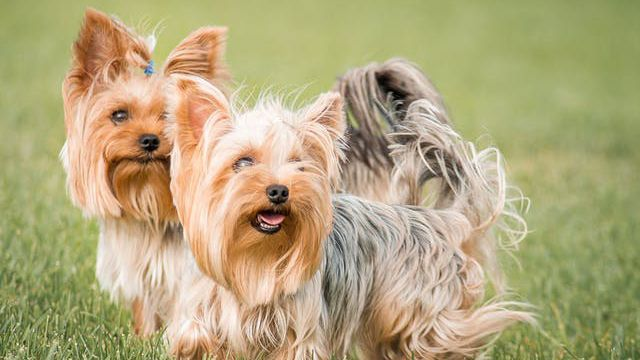
Caring for your Yorkshire Terrier
Grooming, training and exercise tips
Despite their coiffured good looks, Yorkies are still terriers through and through. So they do require a reasonable amount of physical activity every day. With their history as working dogs, they also benefit from being occupied rather than too sedentary. Boredom can lead to your Yorkshire Terrier barking more than is necessary. One daily walk is the minimum and ideally two if possible. They also enjoy playing games with their owners – especially if it involves a ball – as well as plenty of interaction.
Despite their long silky tresses, Yorkshire Terriers don’t tend to shed. However, their unique coat, closer to human hair, does require a gentle daily brushing to keep it looking its lustrous best. Extending almost to the ground if left to its own devices, it may also need an occasional trim. Regular baths are recommended – which is a chance to give their ears a check too – and nails should be clipped as needed. Other Yorkshire Terrier grooming tips include cutting their fringe to avoid it falling in their eyes. It can also be tied in that famous topknot with a bow. To keep things simple, some owners choose to have them clipped all over.
Though it’s true that they can be a bit stubborn at times, Yorkshire Terriers are generally eager to please. They are also fast learners and enjoy mental stimulation. This means they respond well to reward-based training. As this can also help cement the bond between dog and owner, it’s often an enjoyable process for both. Afterwards, Yorkshire Terriers can also excel at dog agility and obedience classes – and some go on to become excellent therapy dogs. Like other toy breeds, they can be a little slower to become house-trained, but they’ll get there with patience. In addition, early socialization with people and animals will reap dividends later.
Despite their coiffured good looks, Yorkies are still terriers through and through. So they do require a reasonable amount of physical activity every day. With their history as working dogs, they also benefit from being occupied rather than too sedentary. Boredom can lead to your Yorkshire Terrier barking more than is necessary. One daily walk is the minimum and ideally two if possible. They also enjoy playing games with their owners – especially if it involves a ball – as well as plenty of interaction.
Despite their long silky tresses, Yorkshire Terriers don’t tend to shed. However, their unique coat, closer to human hair, does require a gentle daily brushing to keep it looking its lustrous best. Extending almost to the ground if left to its own devices, it may also need an occasional trim. Regular baths are recommended – which is a chance to give their ears a check too – and nails should be clipped as needed. Other Yorkshire Terrier grooming tips include cutting their fringe to avoid it falling in their eyes. It can also be tied in that famous topknot with a bow. To keep things simple, some owners choose to have them clipped all over.
Though it’s true that they can be a bit stubborn at times, Yorkshire Terriers are generally eager to please. They are also fast learners and enjoy mental stimulation. This means they respond well to reward-based training. As this can also help cement the bond between dog and owner, it’s often an enjoyable process for both. Afterwards, Yorkshire Terriers can also excel at dog agility and obedience classes – and some go on to become excellent therapy dogs. Like other toy breeds, they can be a little slower to become house-trained, but they’ll get there with patience. In addition, early socialization with people and animals will reap dividends later.
7/7
All about Yorkshire Terriers
If you’re wondering how long Yorkshire Terriers live for, the average age is around 12 to 15 years. However, they can potentially live into their late teens. On average, female Yorkshire Terriers live an extra one-and-a-half years compared to males³.
Other breeds that might interest you
Read more on this topic
Sources
- ¹https://www.akc.org/dog-breeds/yorkshire-terrier/
- ²https://www.akc.org/expert-advice/dog-breeds/the-most-popular-dog-breeds-of-2020/
- ³https://yorkieadvice.com/yorkie-life-expectancy
- ⁴https://www.orvis.com/yorkshire-terrier.html
Like & share this page